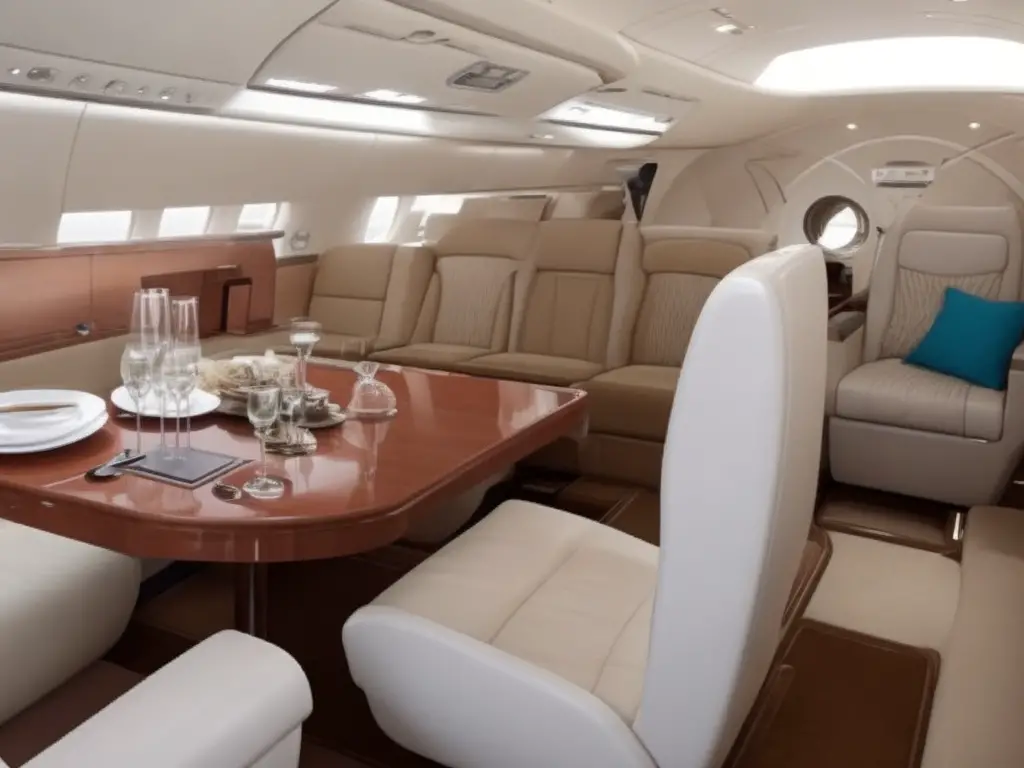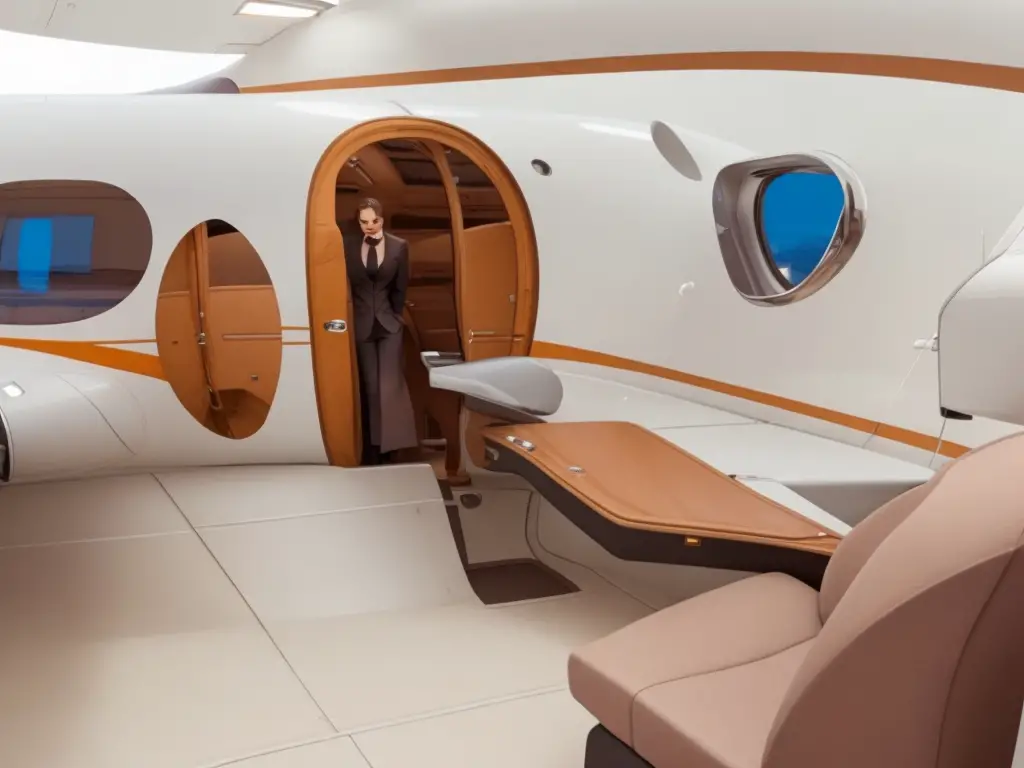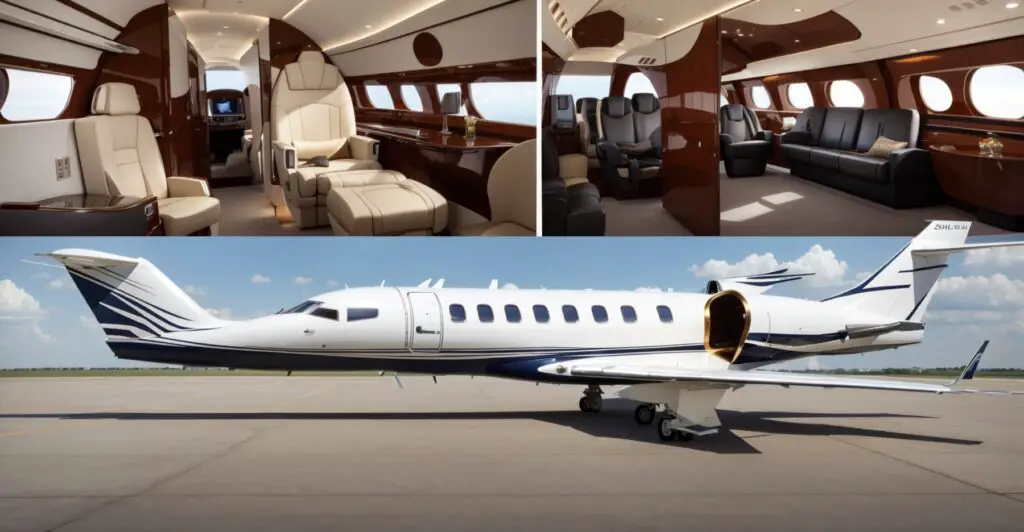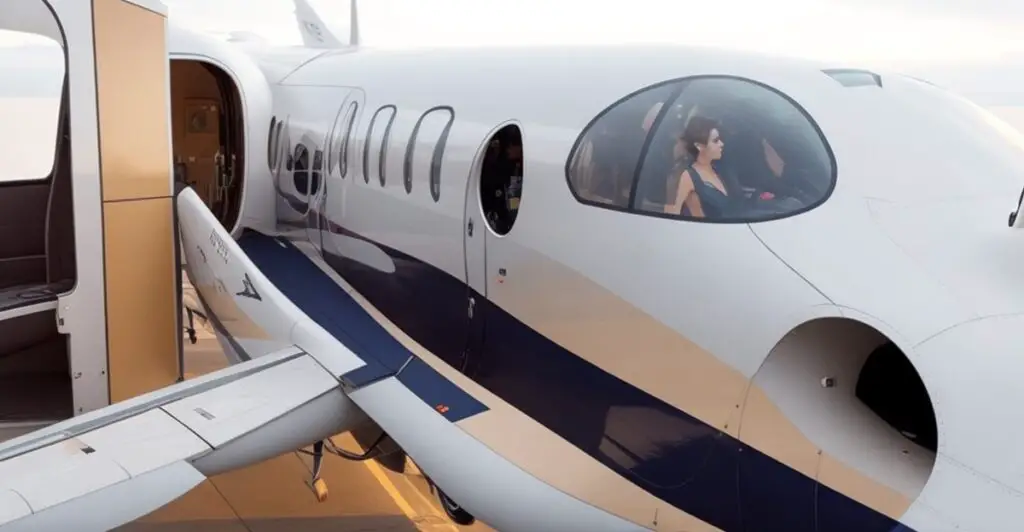Discover the ultimate luxury experience – Find out “How much does it cost to rent a private jet?” and make your travel dreams a reality today! In the realm of air travel, private jets stand as the pinnacle of luxury, exclusivity, and convenience. These soaring marvels of engineering are more than just vehicles; they represent a lifestyle of opulence and unparalleled freedom. While commercial flights have revolutionized travel accessibility, private jets take the concept of personalized air travel to an entirely different altitude. From executives seeking seamless business journeys to celebrities craving privacy and comfort, private jets offer an extraordinary escape from the constraints of conventional aviation.
Private jets, also known as business jets or executive jets, are aircraft designed to cater to the individual needs and preferences of a select few. These aircraft provide an intimate and bespoke flying experience, enabling passengers to avoid the hassles of commercial airports, long security lines, and rigid schedules. Instead, travelers can dictate their departure times, destinations, and onboard amenities. The interior of a private jet resembles a lavish oasis, complete with plush seats, premium entertainment systems, and often, luxurious cabins. Some jets are equipped with conference rooms, bedrooms, and even showers, ensuring that every moment spent in the air is both productive and enjoyable.
The allure of private jets extends beyond comfort. For business magnates and entrepreneurs, these aircraft translate into time saved. With the ability to land at smaller, less congested airports, private jets cut down travel time significantly. This translates into more face-to-face meetings, increased flexibility, and enhanced productivity. Celebrities and high-profile individuals also benefit from the discreet and secure environment that private jets provide, shielding them from prying eyes and intrusive paparazzi.
Owning or chartering a private jet comes with a considerable financial commitment. From the initial purchase price or rental fee to maintenance, fuel, and crew salaries, the costs can be staggering. As a result, private jet travel remains the domain of the affluent, those who prioritize convenience, speed, and exclusivity.
Private jets, we’ll delve into the various aspects of this extraordinary mode of transportation. From the intricacies of purchasing or chartering a jet to understanding the types of jets available, the journey through the world of private aviation promises to be an enlightening one. So, buckle up as we navigate the skies of luxury, sophistication, and unparalleled comfort that define private jet travel.
Booking a seat on a private jet:

Personalized Travel Experience:
When booking a seat on a private jet, you’re not just a passenger, but a valued customer. You have the freedom to tailor the travel experience according to your preferences and schedule.
Flexibility in Departure Times:
Private jets offer flexibility in departure times. You can choose the departure time that suits you best, allowing for a more efficient use of your time.
Choice of Airports:
Private jets can access a wide range of airports, including smaller regional ones. This means you can fly closer to your destination, reducing ground travel time.
Privacy and Security:
Booking a seat on a private jet ensures a high level of privacy and security. You travel with a smaller group of passengers, minimizing interactions with strangers.
Customized Services:
Private jet providers often offer customized services such as catering, onboard entertainment, and comfortable seating arrangements to meet your specific needs.
Direct Routes:
Private jets can often take more direct routes, avoiding layovers and minimizing travel time. This is especially valuable for long-distance journeys.
Efficient Boarding Process:
Boarding a private jet is generally quicker and smoother than on commercial flights. There are no lengthy security lines or crowded terminals to contend with.
Productivity and Comfort:
Private jets provide a comfortable and quiet environment for work or relaxation. You can make the most of your travel time by conducting meetings, preparing for presentations, or simply enjoying the journey.
Cost of renting a private jet.

Aircraft Type:
Private jets come in various sizes and classes, such as light jets, midsize jets, super midsize jets, and large cabin jets. The larger and more luxurious the aircraft, the higher the cost. Each type of jet offers different levels of comfort, range, and amenities.
Distance Traveled:
The distance you plan to travel is a crucial factor. Longer flights consume more fuel, require more crew hours, and might necessitate additional maintenance checks, which can increase the overall cost.
Duration of Flight:
The duration of your flight includes both flight time and potential wait times during layovers or stopovers. Longer durations can lead to higher costs due to crew expenses and aircraft usage.
Airport Fees:
Landing, parking, and handling fees at airports contribute to the overall cost. Some airports, especially major international ones, have higher fees than smaller regional airports.
Time of Year:
The time of year can impact pricing. High-demand periods, such as holidays, peak vacation seasons, and major events, often result in increased costs due to limited aircraft availability.
One-Way vs. Round-Trip:
Booking a one-way flight might lead to “empty leg” costs if the aircraft needs to return to its base without passengers. Round-trip bookings can sometimes offer cost savings by reducing these repositioning fees.
Additional Services:
The cost of additional services can add up. In-flight catering, ground transportation, onboard entertainment, and special requests all contribute to the final price.
Aircraft Age and Condition:
The age, condition, and features of the aircraft impact pricing. Newer aircraft with advanced technology and luxurious amenities generally command higher rental rates.
Provider and Location:
Different private jet charter companies have varying pricing models. Moreover, the cost can differ based on the region you’re flying in due to factors like local operating costs and competition.
Membership or Program:
Some charter companies offer membership programs or jet card options. These programs can provide benefits such as reduced rates, guaranteed availability, and fixed hourly rates for frequent flyers.
Buy your own private jet.HOW MUCH DOES IT COST TO RENT A PRIVATE JET?

Types of Private Jets:
Private jets come in various categories, each designed to serve specific travel needs. Light jets are suitable for short distances and have lower operating costs, while midsize and large cabin jets offer more space and range for longer journeys.
Customization:
One of the most appealing aspects of owning a private jet is the ability to customize its interior to your liking. From seating configurations to interior design, you can create a luxurious and comfortable environment tailored to your preferences.
Initial Investment:
The purchase price of a private jet varies significantly based on the model, age, and condition of the aircraft. Newer models with advanced technology and features tend to have higher price tags.
Operating Costs:
Owning a private jet involves ongoing expenses beyond the initial purchase. These include fuel, maintenance, insurance, hangar fees, pilot salaries (if applicable), and regulatory compliance costs. Operating costs can range from hundreds of thousands to millions of dollars annually, depending on the aircraft.
Maintenance:
Regular maintenance is crucial for the safety and performance of the aircraft. Maintenance schedules and inspections are mandated by aviation authorities. Maintenance costs include routine checks, repairs, and periodic overhauls, which can be a significant ongoing expense.
Regulations and Compliance:
Aircraft ownership comes with regulatory requirements, including adhering to safety standards and obtaining necessary licenses and permits. Compliance with aviation regulations is essential for safe and legal operation.
Depreciation:
Like any high-value asset, private jets can depreciate in value over time. The rate of depreciation depends on factors such as the aircraft’s age, usage, market demand, and overall condition.
Resale Value:
The resale value of a private jet depends on factors such as the model’s popularity, its maintenance history, and market conditions. Resale values can fluctuate, and it’s important to consider potential depreciation when evaluating the investment.
Management Options:
Some jet owners choose to offset their operating costs by chartering out their aircraft when they’re not using it. Aircraft management companies can handle charter operations, maintenance, and other logistics.
Consultation and Expertise:
Given the complexity of aircraft ownership, it’s advisable to consult with aviation experts, financial advisors, and legal professionals who specialize in private aviation. They can provide guidance on selecting the right aircraft, assessing costs, and navigating the legal and regulatory aspects.
New private jet vs. Used private jets.

New Private Jets:
Advanced Technology:
New private jets are equipped with the latest aviation technologies, including advanced avionics systems, communication tools, and safety features. These innovations enhance flight safety, efficiency, and communication capabilities.
Customization:
Buyers of new private jets have the advantage of customizing every aspect of the aircraft’s interior, from seating arrangements to entertainment systems. This level of personalization ensures a unique and tailored travel experience.
Longevity:
Brand-new jets generally have longer lifespans before major overhauls or significant upgrades are needed. This can lead to more consistent and reliable performance over time.
Higher Initial Cost:
The purchase price for new private jets is notably higher due to the incorporation of cutting-edge technology and the pristine condition of the aircraft. This initial investment might be justified by the enhanced features and longer lifecycle.
Warranty:
Many new jets come with manufacturer warranties that cover maintenance and certain repairs during the early years of ownership. This warranty can alleviate some financial burdens associated with maintenance.
Technology Advantage:
The latest navigation, communication, and safety technology are often incorporated into new jets. This technological advantage can improve operational efficiency and the overall flying experience.
Used Private Jets:
Lower Initial Cost:
Used private jets are more cost-effective to acquire than new ones. This affordability can open up private jet ownership to a wider range of buyers.
Known History:
Used jets come with a documented maintenance and flight history, allowing buyers to assess the aircraft’s condition and reliability. This history aids in making informed purchase decisions.
Depreciation Consideration:
The resale value of used jets might have stabilized, offering buyers a clearer understanding of potential depreciation over time. This can be advantageous for those who wish to manage long-term financial considerations.
Immediate Availability:
Unlike waiting for a new jet to be manufactured and delivered, used jets are readily available. Buyers can start using the jet for their travel needs almost immediately.
Operational Savings:
Insurance premiums and operational costs for used jets can be lower compared to new models. This can contribute to more budget-friendly ownership.
Limited Customization:
While some modifications are possible, used jets might have limitations in terms of customization options compared to brand-new ones. Buyers might need to compromise on certain interior features.
Pre-Purchase Inspection:
It’s crucial to conduct a comprehensive pre-purchase inspection before finalizing the acquisition of a used jet. This inspection helps identify any existing issues or maintenance requirements.
Experience Matters:
Buyers with aviation experience might find value in older models that still offer solid performance, safety features, and comfort. These jets can provide a satisfying ownership experience at a more reasonable cost.
In making the decision between a new or used private jet, buyers should weigh their budget, desired features, potential long-term savings, and the importance of the latest technology. New jets offer cutting-edge luxury and performance, while used jets provide affordability and a known track record. Both options cater to different needs and preferences within the realm of private jet ownership.
Various additional fees you might encounter when renting a private jet:

Fuel Surcharge:
Fuel costs can fluctuate based on market prices, and a fuel surcharge might be applied to your rental fee to account for these fluctuations. The surcharge ensures that you pay a fair amount for the fuel used during your flight.
Landing Fees:
Airports charge landing fees for the use of their runways, taxiways, and facilities. The fees vary depending on the size and location of the airport. Larger airports and those in busier areas tend to have higher landing fees.
Handling and Ramp Fees:
These fees cover the services required to manage the aircraft on the ground. Ground handling includes services like aircraft marshaling, baggage handling, and towing. Ramp fees are charges for parking the aircraft on the ramp.
Catering and Refreshments:
If you opt for in-flight catering, the cost will depend on the type and quality of the catering requested. This can range from simple snacks to elaborate gourmet meals and beverages.
De-icing Fees:
In cold weather conditions, especially during winter, de-icing the aircraft before takeoff is essential for safety. De-icing can incur an additional fee due to the equipment and materials involved.
Overnight Fees:
If your travel plans involve an overnight stay, you might be responsible for the crew’s accommodation and expenses. This is particularly relevant for longer trips or when flights require crew rest.
Taxes:
Various taxes might apply, depending on the jurisdiction and location of your flight. These can include sales tax, excise tax, and value-added tax (VAT), among others.
Crew Expenses:
Some private jet charter agreements include the cost of the flight crew (pilots and flight attendants) in the rental rate. In other cases, crew expenses might be charged separately, covering their salaries and any accommodations they require.
Wi-Fi and Entertainment:
If you wish to have Wi-Fi access or specific entertainment options on board, there could be additional charges associated with providing these services during your flight.
Repositioning Fees:
If the aircraft needs to be repositioned to accommodate your travel plans, you might be responsible for the positioning flights’ costs. This can occur when the aircraft isn’t based at the departure or arrival location.
Wait Time:
If you keep the aircraft and crew waiting at your destination for a significant amount of time, there could be additional charges. These charges account for the crew’s time and the aircraft’s availability.
International Fees:
International flights come with additional fees such as customs and immigration charges, as well as regulatory compliance costs associated with flying across borders.
Charter Broker Fees:
If you use a charter broker to arrange your private jet rental, they might charge a separate fee for their services. This fee covers the broker’s assistance in selecting the right aircraft, negotiating terms, and managing logistics.
Private jet card membership:

A private jet card membership is a prepaid program offered by private jet charter companies that provide individuals or businesses with a convenient and flexible way to access private jet travel. This membership model offers several advantages and features tailored to frequent flyers and those seeking a premium travel experience. Here’s a detailed overview of private jet card memberships:
Key Features:
Prepaid Flight Hours:
With a private jet card membership, you purchase a specific number of flight hours in advance. These hours are typically loaded onto your account and can be used as needed for your travel.
Guaranteed Availability:
Many jet card programs offer guaranteed availability, ensuring that a private jet will be ready for you with relatively short notice, often within 24 to 48 hours.
Access to Multiple Aircraft:
Jet card programs usually provide access to a fleet of different types of private jets, ranging from light jets to large cabin jets. This flexibility allows you to choose the most suitable aircraft for each trip.
Fixed Rates:
The hourly rates for jet card flights are predetermined and fixed for the duration of the membership. This provides cost predictability and protection against sudden price increases.
No Ownership Responsibilities:
Unlike owning a private jet, a jet card membership doesn’t involve the financial and administrative responsibilities of aircraft ownership, such as maintenance, crew management, and storage.
Customized Services:
Jet card programs often offer personalized services, including catering, ground transportation, and other amenities, based on your preferences.
Reduced Travel Planning:
Private jet card memberships streamline the booking process, reducing the time and effort required to arrange your flights. Many providers offer online platforms for easy booking and management of your account.
No Long-Term Commitment: Jet card memberships typically don’t require long-term commitments. You can often choose the number of flight hours that suit your needs without being locked into a lengthy contract.
Considerations:
Hourly Rates: The hourly rates for jet card memberships can be higher than those for traditional charter bookings, but the trade-off is the convenience and guaranteed availability.
Unused Hours: Be aware of the expiration policy for unused flight hours. Some programs have time limits on when you need to use your purchased hours.
Aircraft Availability: While most jet card memberships offer guaranteed availability, it’s still essential to book your flights well in advance, especially during peak travel periods.
Coverage and Fees: Review the program’s terms to understand any additional fees, fuel surcharges, or other costs that might apply.
Provider Reputation:
Research the reputation and history of the private jet charter company offering the jet card program to ensure reliability and quality of service.
The benefits of flying privately.

Time Efficiency:
Private jet travel eliminates the need to adhere to commercial airline schedules. You can depart and arrive according to your own timetable, saving valuable hours and reducing waiting time at airports.
Flexible Itineraries:
Private jets can access a vast network of airports, including smaller regional ones. This means you can land closer to your final destination, bypassing major hubs and reducing ground transportation time.
Customized Experience:
From the type of aircraft to the interior design, you have control over every aspect of your flight. You can choose layouts that suit your needs, from spacious work areas to luxurious lounges.
Privacy and Security:
Flying private grants you exclusive use of the aircraft. You can discuss sensitive matters freely and conduct business meetings without concerns about confidentiality. Additionally, you have control over who shares the flight with you.
Reduced Travel Time:
Private jets often fly at higher speeds and can take direct routes, avoiding congested airspaces. This means you can reach your destination faster, even for short distances.
Comfort and Space:
Private jet cabins are designed for comfort. You have ample legroom, plush seating, and the ability to move around. It’s a space that promotes relaxation, work, or social interaction.
No Baggage Hassles:
There are no baggage fees, weight limits, or worries about lost luggage. You can bring what you need without constraints.
Personalized Service:
The flight crew’s attention is solely on you and your guests. Flight attendants provide personalized service, catering to your preferences for meals, drinks, and comfort.
Access to Remote Locations:
Private jets can land at airports that are often inaccessible to commercial airlines. This gives you access to remote or underserved areas for business or leisure.
Avoiding Congestion:
Private jet terminals and facilities are separate from commercial ones. This means you can avoid crowded check-in lines, security screenings, and waiting areas.
Productive Work Environment:
The quiet and comfortable cabin of a private jet is conducive to work. You can hold meetings, make phone calls, and access Wi-Fi to stay connected.
Family and Group Travel:
Private jets are ideal for traveling with loved ones or colleagues. You can enjoy a shared experience, spend quality time together, and even bring pets along.
No Connecting Flights:
Private jets offer direct point-to-point travel. This eliminates the need for connecting flights, layovers, and potential delays.
Relaxed Check-In Process:
Private jet check-in is swift and hassle-free. There’s no need to arrive hours in advance, and security procedures are streamlined.
Luxury and Prestige:
Private jet travel is associated with luxury and exclusivity. It’s a premium experience that reflects your status and appreciation for comfort.
Last-Minute Travel:
Private jets can be ready for departure within hours, offering the flexibility to arrange travel even on short notice.
Stress-Free Experience:
Private jet travel minimizes the stress often associated with commercial flying, from long lines to crowded terminals.
FAQs:
How much does it cost to rent a private jet?
The cost of renting a private jet varies widely depending on several factors. These factors include the type of aircraft, the distance traveled, the duration of the flight, additional services, and market conditions. On average, light jets can range from $2,000 to $3,000 per hour, midsize jets from $3,500 to $4,500, and super-midsize or large cabin jets from $4,500 to $7,000 or more per hour.
Are there any additional fees beyond the hourly rate?
Answer: Yes, there can be additional fees beyond the hourly rental rate. These fees might include fuel surcharges, landing fees at airports, handling and ramp fees, catering costs, de-icing fees in cold weather, and taxes. It’s important to discuss these potential fees with the private jet charter company and request a detailed breakdown of all costs.
Can I choose the type of aircraft for my private jet rental?
Yes, private jet charter companies typically offer a range of aircraft types to choose from, including light jets, midsize jets, super midsize jets, and large cabin jets. The choice of aircraft depends on factors such as the number of passengers, travel distance, and desired amenities. You can work with the charter company to select the most suitable aircraft for your needs.
Is there a minimum or maximum rental duration for private jets?
Private jet charter companies often have minimum hourly requirements, which might vary based on the type of aircraft. For example, there might be a minimum of 2 to 3 hours for light jets and longer minimums for larger aircraft. There’s typically no strict maximum duration, allowing you to customize your travel itinerary.
Can I bring pets on a private jet?
Yes, many private jet charters allow pets on board. However, it’s essential to inform the charter company in advance to ensure arrangements are made for the pet’s comfort and safety. Some charter companies might have specific pet-related policies and fees, so it’s recommended to inquire about this when booking.

